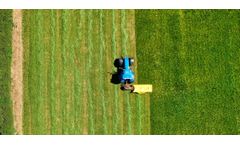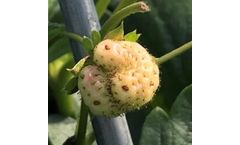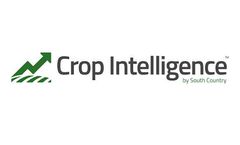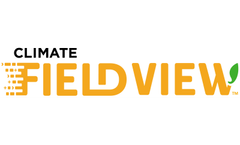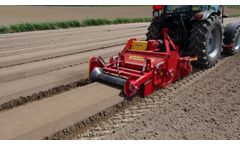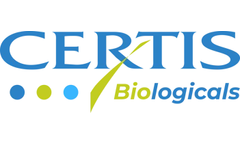Crop Protection System Articles & Analysis
26 articles found
Recently, an excessive ethylene oxide level has led to a wave of recalls in the food sector. When this was also the case for the binding agent ‘locust bean gum’, Goodlife Foods immediately pulled out all the stops. Thanks to BESTMIX, this frozen snack manufacturer could detect in no time the products to be recalled, so it managed to reduce to an absolute minimum the impact of the ...
ByBESTMIX
This agricultural technology company introduced Pisys Permit to Work software at one of their R&D Sites as part of an efficiency drive. They achieved a speedier approvals process, knowledge of where contractors were working within their site and a site-wide overview for all ongoing work on a plot ...
Soft Fruit Agronomist, Dr Neil Holmes, gives an autumn strawberry update. As strawberry crops approach the autumn season, several challenges remain for late 60-day June bearer and ever bearer crops. ...
“Part of the problem is people don’t trust the information,” says Ryan Hutchison of South Country Equipment in Saskatchewan. He was at Crop Connect 2019 in Winnipeg to give a presentation called Crop Intelligence — Trusting the Data. ...
When a technology comes along that unlocks a new way of thinking about an old problem, we marvel at it as a “modern miracle.” Growing up in Ireland, I know that memories of the Great Potato Famine still run deep. Today, Irish farmers know how fungicides have helped ensure that potato late blight remains a distant memory. Agriculture has come a long way since the nineteenth century, ...
What are you missing in your harvest data? Across hundreds or even thousands of acres, it’s easy to get lost in this sea of data points. It’s simply too much for one person to calculate. That’s what makes a digital tool a powerful ally. It never gets tired or distracted and when provided the right data, it never puts a decimal in the wrong place. The yield analysis tool in ...
Tassel Counts available for the 2020 growing season Sentera announces that its Tassel Count analytics product will be available to all FieldAgent™ customers in March 2020. Instead of forecasting yield using a small number of spot samples, the Sentera tassel count analytics tool allows users to more precisely calculate yields using tassel population data gathered across the entire field. ...
On March 7, 2019, in the Court of Justice of the European Union (EU), the Eighth Chamber of the General Court issued two judgments in cases regarding access of confidential information related to glyphosate. One of these decisions (Tweedale v. EFSA, Case T-716/14) related to a 2014 request for two toxicity studies that were “key studies” in the determination of glyphosate’s ...
In addition to investing in seeds, fertilizers and plant protection products, you need the suitable equipment. This will allow you to reduce production costs, increase the farm prestige and increase competitiveness. ...
The federal government’s recent action on the common herbicide ingredient dicamba is one such example, and resilient farmers may need to make some changes to comply with new regulations laid out by the U.S. Environmental Protection Agency (EPA) in October 2017. That’s when EPA ruled that three crop protection products labeled for ...
Carbendazim is a fungicide largely used in agriculture as a plant protection product. Due to agricultural runoffs, drainage and leaching it reaches surface waters at concentrations possibly hazardous to aquatic communities. Due to potential and continuous release of carbendazim to aquatic systems, long term exposure to aquatic organisms should be addressed. To fill the knowledge gap on this, ...
The first part of the workshop agenda included a number of short presentations from research and technology organizations to highlight general scientific developments in the major areas of 1) labour and automation; 2) crop protection products; 3) biopesticides and systems approaches; and 4) plant breeding and genomics. ...
Whether they activate plant defenses, parasitize or inhibit pathogen growth or make the environment less favourable to disease, they can play an integral role in crop protection. While the greenhouse sector first excelled at incorporating biopesticides in controlled environments, the learnings are now being extended to field production. ...
“Cropping history is a valuable resource that should be used to help minimise the risk of slug damage. ...
In the first step of the earthworm risk assessment for plant protection products the risk is assessed by comparing the no‐observed effect levels (NOEL) from the laboratory reproduction tests with the predicted exposure of the plant protection product in soil while applying a trigger value (assessment factor; AF) to cover uncertainties. If this indicates a potential risk, field studies are ...
This case study of the SETAC workshop MODELINK demonstrates the potential use of mechanistic effects models for macrophytes to extrapolate from effects of a plant protection product observed in laboratory tests to effects resulting from dynamic exposure on macrophyte populations in edge‐of‐field water bodies. A standard EU risk assessment for an example herbicide based on macrophyte laboratory ...
Standard risk assessment of plant protection products (PPP) combines ‘worst‐case’ exposure scenarios with effect thresholds using assessment (safety) factors to account for uncertainties. If needed, risks can be addressed applying more realistic conditions at higher tiers, which refine exposure and/or effect assessments using additional data. However, it is not possible to investigate the wide ...
On June 3, 2015, the General Court of the European Court of Justice issued a ruling in Luxembourg Pamol (Cyprus) Ltd. and Luxembourg Industries Ltd. (Luxembourg) vs. European Commission regarding the publication of information by the European Food Safety Authority (EFSA) in its peer reviewed draft assessment report of potassium phosphonate that Luxembourg claimed as confidential. The case was ...
Irrigated area in the Mid-South USA continues to increase and now totals four million ha. Because of low available water holding capacities and shallow root-limiting layers in many soils, irrigation management is difficult. Water quality and water use efficiency impacts under irrigation are poorly understood, but comprehension is necessary if conversion from groundwater to surface water supplies ...
The chronic toxicity of chemicals to fish is routinely assessed by using fish early life stage (ELS) test results. Fish full lifecycle (FLC) tests are generally only required when toxicity, bioaccumulation, and persistence triggers are met, or when there is a suspicion of potential endocrine disrupting properties. This regulatory approach is based on a relationship between the results of fish ...


